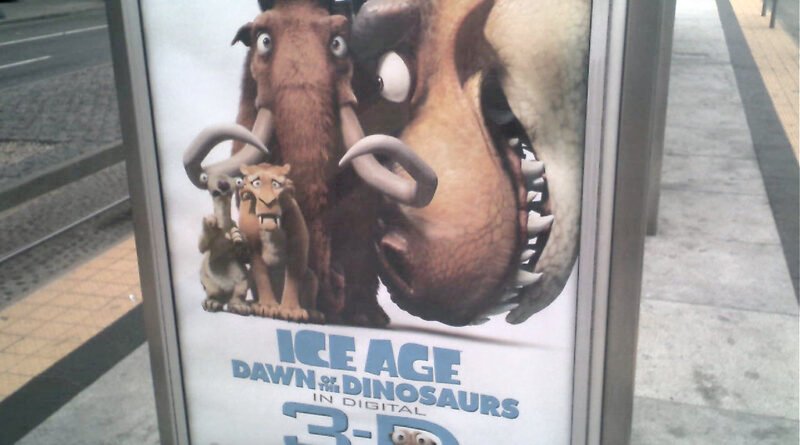The Animals of Ice Age
by
The three main characters we all know from the movie Ice Age and its sequels are all based on animals that lived during the glacial age that began during the Pleistocene epoch. However, the identity of the acorn-obsessed saber-toothed squirrel named Scrat turned out to be a scientific surprise.
Manny the Mammoth
Manny is a woolly mammoth (Mammuthus primigenius), a species that lived about 200,000 years ago on the steppes of eastern Eurasia and North America. The wooly mammoth was about as big as an African elephant but had a couple of distinct differences from today’s elephants. Instead of being bare-skinned, the wooly mammoth grew very thick fur all over its body that consisted of long guard hairs and a shorter, dense undercoat. Manny was a reddish-brown color, but mammoths ranged in color from black to blond and variations in between. The mammoth’s ears were smaller than the African elephant’s, helping it retain body heat and minimize the risk of frostbite. Another difference between mammoths and elephants: a pair of exceedingly long tusks that curved in an exaggerated arc around its face. Like modern elephants, the mammoth’s tusks were used in conjunction with its trunk to acquire food, fight with predators and other mammoths, and move things around when needed. The wooly mammoth ate grass and sedges that grew low to the ground because there were few trees to be found in the grassy steppe landscape.
Sid the Giant Ground Sloth
Sid is a giant ground sloth (Megatheriidae family), a group of species that were related to modern tree sloths, but they looked nothing like them–or any other animal, for that matter. Giant ground sloths lived on the ground instead of in trees and were enormous in size (close to the size of mammoths). They had huge claws (up to about 25 inches in length), but they did not use them to catch other animals. Like the sloths that live today, giant sloths were not predators. Recent studies of fossilized sloth dung suggest that these giant creatures ate tree leaves, grasses, shrubs, and yucca plants. These Ice Age sloths originated in South America as far south as Argentina, but they gradually moved north to southern regions of North America.
Diego the Smilodon
Diego’s long canine teeth give his identity away; he is a saber-toothed cat, more accurately known as a smilodon (genus Machairodontinae). Smilodons, which were the largest felines to have ever prowled the earth, lived in North and South America during the Pleistocene epoch. They were built more like bears than cats with heavy, stocky bodies built for powerful predation of bison, tapirs, deer, American camels, horses, and ground sloths like Sid. “They delivered a quick, powerful and deep stabbing bite to the throat or upper neck of their prey,” explains Per Christiansen of Aalborg University in Denmark.
Scrat the “Saber-Toothed” Squirrel
Unlike Manny, Sid, and Diego, Scrat the “saber-toothed” squirrel who is always chasing an acorn was not based on an actual animal from the Pleistocene. He is a fun figment of the movie creators’ imaginations. But, in 2011, a strange mammalian fossil was found in South America that looked a lot like Scrat. “The primitive mouse-sized creature lived among the dinosaurs up to 100million years ago and sported a snout, very long teeth, and large eyes –just like popular animated character Scrat,” reported The Daily Mail.
Other Animals that Lived During the Ice Age
Mastodon, Cave Lion, Baluchitherium’ Woolly Rhino. Steppe Bison, and Giant Short-Faced Bears.
Bove, Jennifer. “The Animals of Ice Age.” ThoughtCo. https://www.thoughtco.com/the-animals-of-the-ice-age-movies-1182004 (accessed August 12, 2024).




